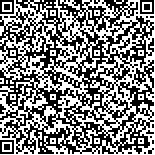下载中心
优秀审稿专家
优秀论文
相关链接
摘要

连续多年的高强度耕作会导致耕地层土壤养分、土壤有机质等逐渐下降,在作物收获之后作物秸秆还田量较少的情况下尤其突出,而对耕地利用状况动态变化(种植耕地与未种植耕地的动态变化)的识别,能够有效地反映出不同作物的轮作模式以及耕地种植强度的变化.本文以阿根廷3大农业主产省份(布宜诺斯艾利斯省、科尔多瓦省以及圣太菲省)为研究区,利用中分辨率成像光谱仪(MODIS)16天合成的归一化植被指数(NDVI)数据产品,在分析不同地物类型、不同耕作模式下的NDVI动态变化过程的基础上,结合地面样本数据统计获得有作物种植农田与无作物种植农田的识别阈值,综合利用阈值法和植被指数动态变化过程分析法对阿根廷3大主产省份开展了耕地利用状况动态变化遥感识别,实现了不同年份的耕地利用状况动态变化识别.地面观测数据验证结果表明,在阿根廷3大主产省内有作物种植耕地和未种植耕地的总体识别精度高于97%,但在不同的作物生长阶段,未种植耕地识别结果的精度差异较明显,在作物生长季内作物生长较为茂盛的时期,有作物种植耕地和未种植耕地的识别精度几乎达到99%,但在双季或多季作物种植区,作物轮作期间的耕地利用状况识别精度相对偏低,总体精度在95%左右,主要是受16天合成NDVI数据的最大值合成法限制.
Contents of soil nutrients and soil organic matter of arable land will decrease gradually after high cropping intensity for several years. When a minimal amount of crop residue remains in farmland, significant decreased trends can be observed. Monitoring the dynamic changes in arable land utilization, specifically the dynamic identification of cropped and uncropped arable land, is important. The objective of this study is to monitor the dynamic change in arable land utilization by using time series of remote sensing data. Three major crop-producing provinces in Argentina (Buenos Aries, Cordoba, and Santa Fe) are selected as our study area. Time series of MODerate-resolution Imaging Spectroradiometer (MODIS) Sixteen-day composite Normalized Difference Vegetation Index (NDVI) products at 250 m resolution is used. On the basis of an analysis of profiles of time series NDVI, Savitzky-Golay filters are used to smooth the noise in NDVI curves, and Lagrange polynomials are employed to extract the extreme points for the smoothed NDVI curves. A threshold method associated with NDVI curve analysis is used to identify dynamic changes in the distribution of cropped and uncropped arable land. Independent field samples are used to evaluate the accuracy of the classification using producer's accuracy, user's accuracy, overall accuracy, and Kappa coefficient derived from confusion matrix. Accuracy assessment results indicate that the proposed method can effectively identify whether arable land is cropped. The overall accuracy is above 97%. In regions with only a short period of time between harvesting one crop and sowing the following crops, the accuracy is approximately 95%. According to the analysis in this study, the error mainly comes from the Sixteen-day maximum value composite algorithm of MODIS NDVI products, which lose a low NDVI value during harvesting and sowing periods. In future, such applications will require higher spatial and temporal resolution NDVI data to obtain higher recognition accuracy of cropped and uncropped arable land. One solution could be to construct high spatial and temporal resolution NDVI datasets combined with high temporal and high spatial resolution images.A new method for monitoring arable land utilization is developed on the basis of time series NDVI data, and new products—dynamic changes in arable land utilization—are produced. The proposed method for identifying cropped and uncropped arable land by using time series NDVI data is applicable for regions with large farms. Extensive validation needs to be conducted in different regions to apply the proposed method to other regions.

